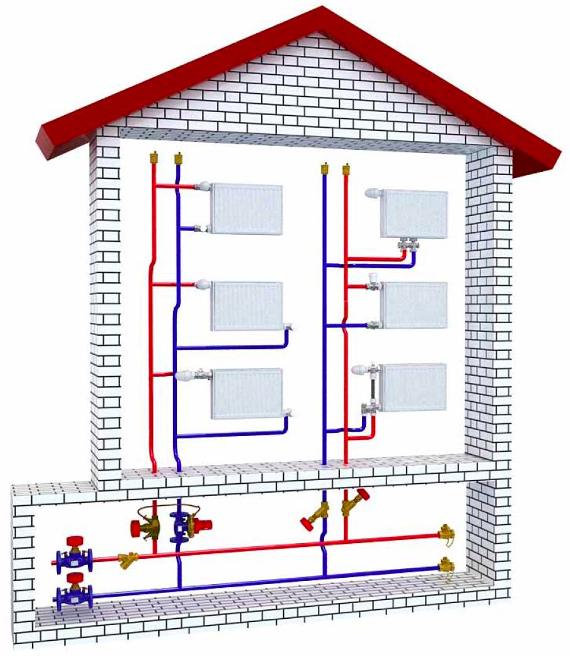Superheated water is a liquid in the heating system heated to the boiling point corresponding to a given pressure indicator. This is a clear deviation from the norm, which the return pipeline helps to eliminate. The coolant enters through it into the mixing chamber, where it is connected to the direct flow and, due to this, cools it. The main causes of overheated water and ways to prevent this phenomenon are described below.
The content of the article
- What does superheated water mean and why is it formed
- How to lower the temperature of superheated water
What does superheated water mean and why is it formed
Superheated water in a heating system is a liquid heated to a critically high temperature at which it can boil even under conditions of high pressure. In fact, this is an emergency situation that can lead to an accident. In a central heating system, the coolant has the following temperature:
- 130-150 degrees at the hottest point (directly at the place of heating by the boiler at the CHPP);
- 110-120 degrees at the outlet of the boiler house or CHP;
- 95-105 degrees - at the entrance to an apartment building;
- approximately the same level should be in the radiators of each apartment (but not higher).

It is clear what kind of water is in the central heating batteries. In terms of temperature, it approximately corresponds to 100 degrees, i.e. Basically, it's the boiling point. But in fact, the boiling process does not occur due to increased pressure. If even under such conditions the liquid begins to boil, it is already superheated water. The reasons for its occurrence may be as follows:
- clogging of the boiler filters;
- the formation of an air lock inside the pipe (for example, due to loss of tightness, improper repairs);
- low water flow rate due to disruption of the circulation pump;
- clogging of heat exchangers, for example, scale formation;
- incorrect installation of individual elements of the heating system, for example, an elevator.
How to lower the temperature of superheated water
In a central heating system, this phenomenon is rarely observed, since in each area the temperature is automatically controlled. Obviously, in order to cool the water, it is necessary to lower the temperature in the boiler or turn it off altogether for a while.
But this measure cannot be considered effective if there is no such important element in the heating circuit as a return pipeline and an elevator. The return pipe (return) drains water from the radiators after significant cooling by about 20-30 degrees. The minimum temperature should be 63 degrees, although 70 degrees and above are usually observed.
Moreover, the cooled liquid on the return line does not go to the sewer, but closes to the pipe. The junction of the direct and reverse circuits is equipped with a special metal element - an elevator. As can be seen in the diagram, it provides the connection of two coolant flows in the mixing chamber.

Moreover, water from the heating network enters through a narrowing device - a nozzle (shown in red). It not only ensures the mixing of the two streams, but also increases the pressure. This difference is necessary to ensure a strictly defined rate of water circulation. Typically, elevators are installed only in apartment buildings. Heating in private houses is equipped with a circulation pump, which provides the desired flow rate.


